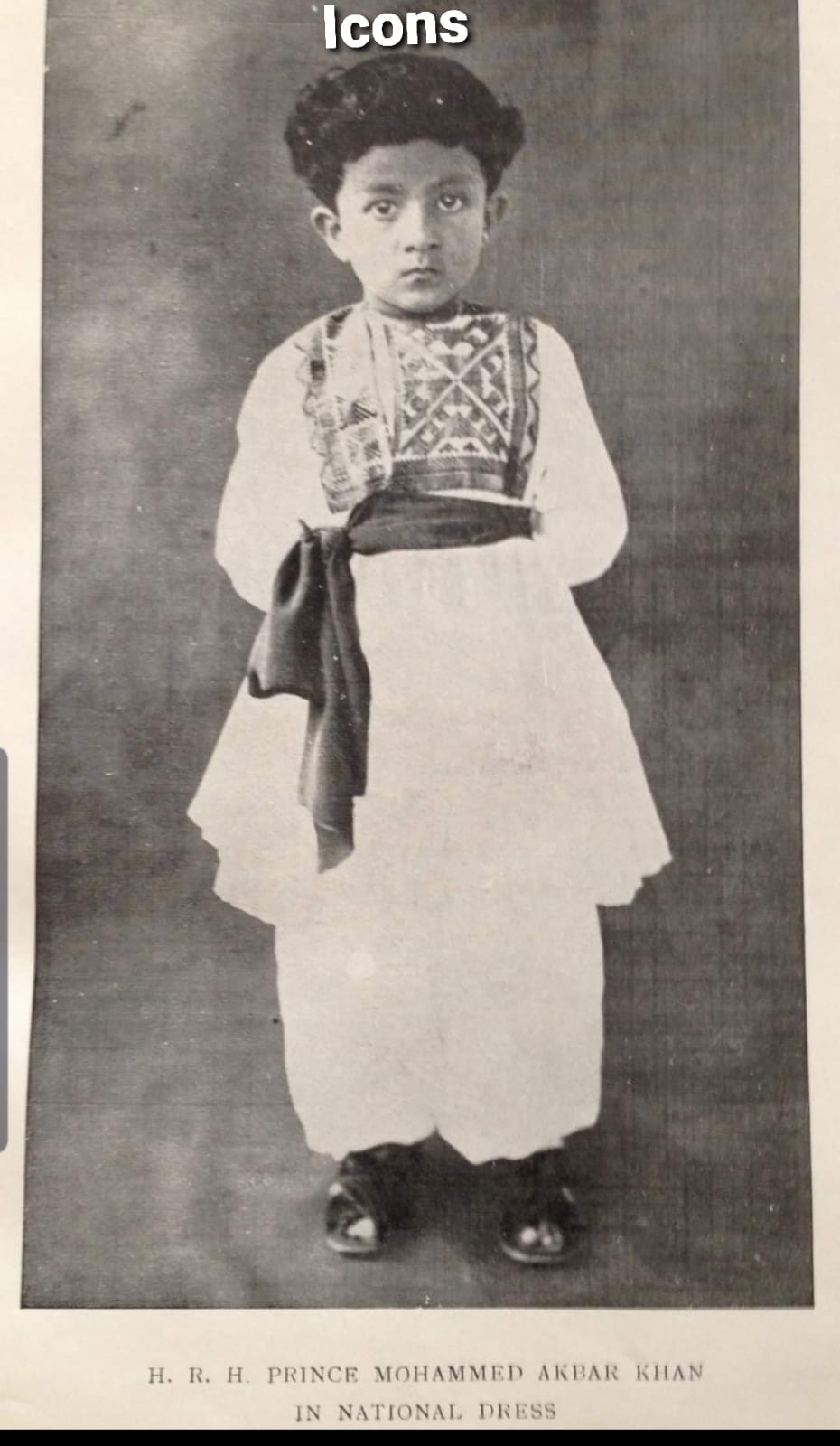This historic picture is dedicated to Prince Mustafa Zahir, the son of the late Mohammad Zahir Shah, the last king of Afghanistan. In this image, the young Mohammad Akbar Khan, the first son of King Zahir Shah, can be seen in national dress, taken in Kabul in 1940. The young prince was named after the hero of the First Anglo-Afghan War. Tragically, he died in November 1942 at only nine years old, and his younger brother, Ahmad Shah Khan, became Crown Prince.
Afghans, particularly those of Pashtoon origin, revere warriors as their historical and National icons. Figures like Ahmed Shah Abdali, known for his conquests in India, and Sardar Muhammad Akbar Khan Barakzai and Sardar Muhammad Ayub Khan, both my ancestor, who displayed extraordinary valor the Battle Fields. Akbar Khan at Jamrud by decapitating Sikh General Hari Singh Nalwa in hand-to-hand combat, hold significant places in their history. Akbar Khan also led the Afghans to a decisive victory against the British during the First Anglo-Afghan War, with Dr. William Brydon being the sole survivor of the British forces, who made it all alone and battered on his pony to Jalalabad to be rescued by the British patrol to whom he gave the news that all was lost . Americans were lucky flying back in safety to their country of origin unlike the Russians who were fired upon to the very last soldier who left the Afghan soil.
Afghans, on both sides of the Durand Line, are born warriors and deeply resistant to foreign intervention unless led by their traditional leaders, who must possess impeccable character and courage. This stands in stark contrast to modern practices, where leaders are often appointed through flawed electoral systems or training courses. Historically, the British tried to impose their bureaucratic governance supported by military might on Pashtoon society, a strategy that repeatedly failed.
After 20 years of direct battlefield experience, the Americans realized that the Pashtuns are incredibly resilient. Their resistance is like a spring: the more it is compressed, the more energy it stores to rebound. This understanding made it clear that military prowess alone cannot subdue them, a lesson better learned from history than through repeated conflicts.

